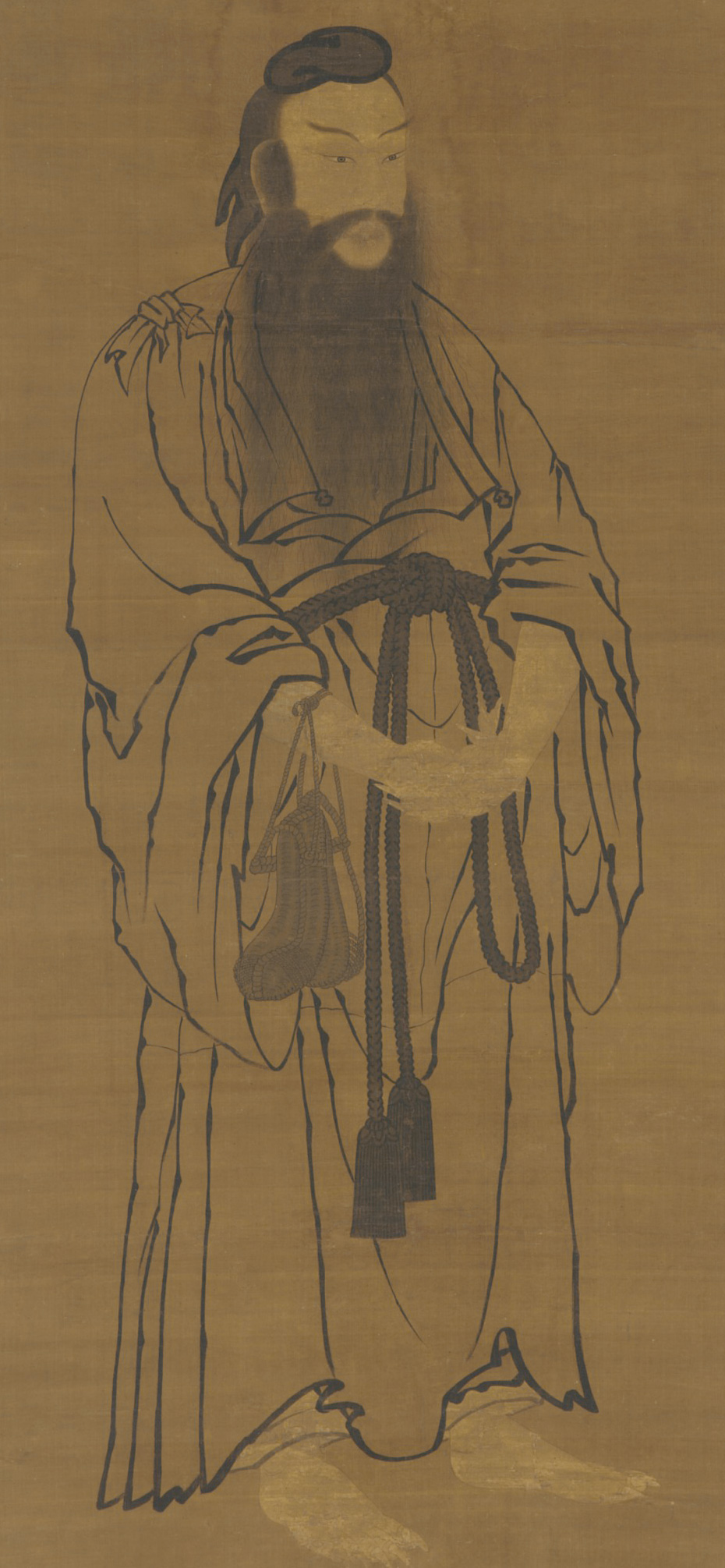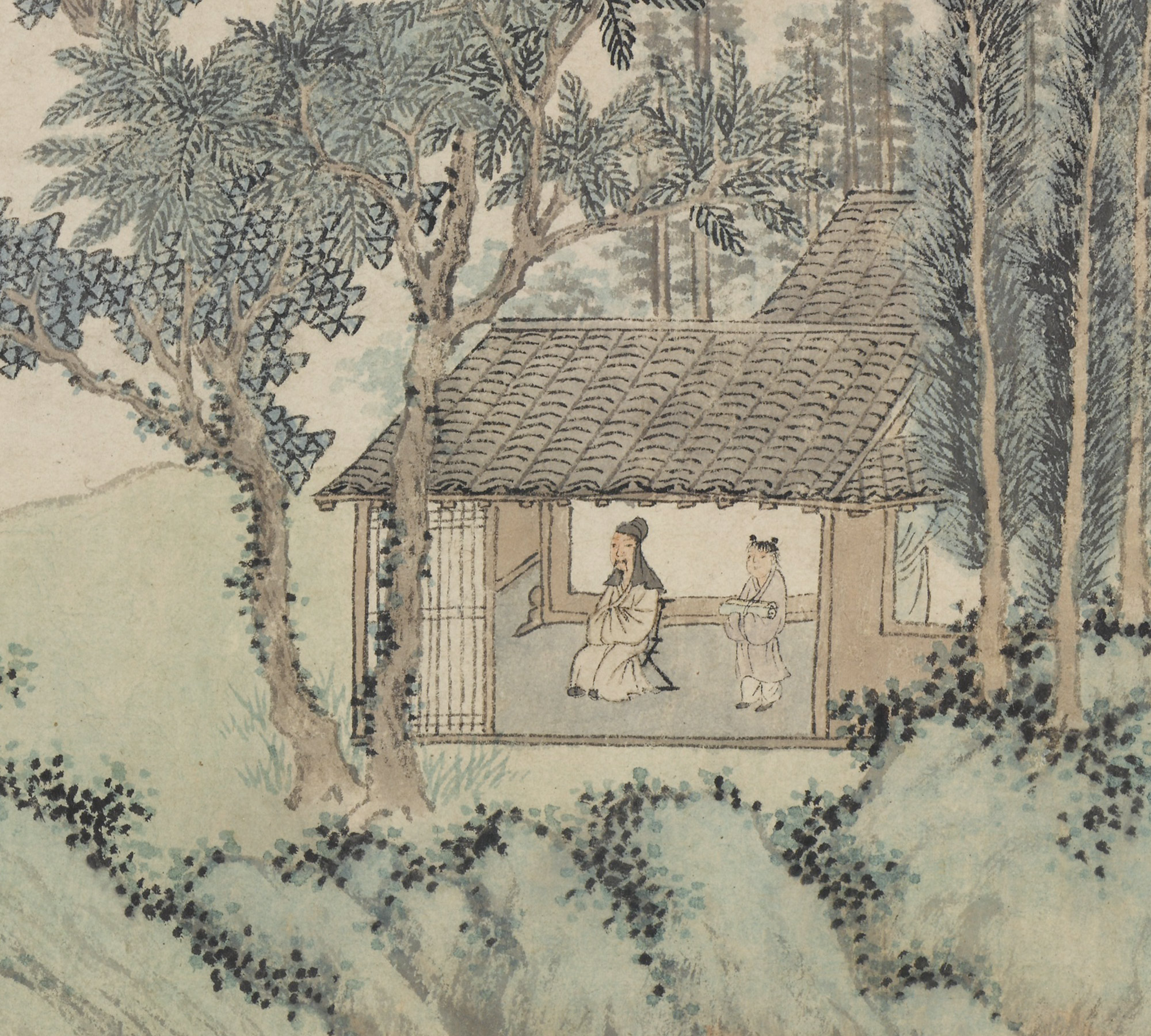Lu Dongbin
Lu Dongbin is one of many literati heroes. A scholar and poet of the Tang dynasty (618–907), he is said to have lived the extraordinary span of two centuries. Myth and legend go hand in hand with much of literati lore, so Lu Dongbin became a larger-than-life figure. He was also popular in Zen Buddhism, which absorbed the stories of Daoist immortals into its pantheon. Zen paintings show Lu Dongbin as a fierce tamer of dragons who carries a flask from which he can conjure the mighty beasts.
In the literati universe, Lu Dongbin was tamed, and his identity as a scholar became his primary attribute. That interpretation is closer to descriptions in Chinese literature, such as History of the Song in 1343, which reflect a more subtle, sober reading of the subject. These two paintings, one by the Japanese literati artist Hayashi Jukkō from the early nineteenth century and an anonymous Chinese work from the Ming dynasty (1368–1644), capture this literati interpretation of Lu Dongbin. They also show how closely some Japanese artists followed their Chinese sources. Both artists imbue Lu Dongbin with silent determination and use the outlines of his clothes as an opportunity to demonstrate their unique and skilled brushwork.
Learn more about the work of Ike Taiga, Hayashi Jukkō, and other Japanese literati artists in the exhibition Imagined Neighbors: Japanese Visions of China, 1680–1980 and in the accompanying publication.
Drag the slider to compare the images.


 Lu Dongbin, Hayashi Jukkō (1777–1813), Japan, Edo period, late 1770s, hanging scroll, ink and light color on paper, Freer Gallery of Art Collection, National Museum of Asian Art, Smithsonian Institution, The Mary and Cheney Cowles Collection, Gift of Mary and Cheney Cowles, F2020.5.13a–f
Lu Dongbin, Hayashi Jukkō (1777–1813), Japan, Edo period, late 1770s, hanging scroll, ink and light color on paper, Freer Gallery of Art Collection, National Museum of Asian Art, Smithsonian Institution, The Mary and Cheney Cowles Collection, Gift of Mary and Cheney Cowles, F2020.5.13a–f
 Standing figure of Lu Dongbin, anonymous artist, China, Ming dynasty (1368–1644), ink and color on silk, Freer Gallery of Art Collection, National Museum of Asian Art, Smithsonian Institution, Gift of Charles Lang Freer, F1916.580
Standing figure of Lu Dongbin, anonymous artist, China, Ming dynasty (1368–1644), ink and color on silk, Freer Gallery of Art Collection, National Museum of Asian Art, Smithsonian Institution, Gift of Charles Lang Freer, F1916.580